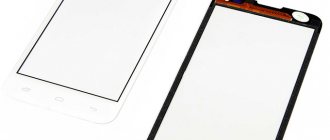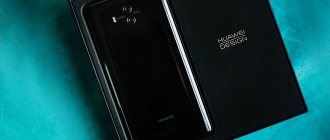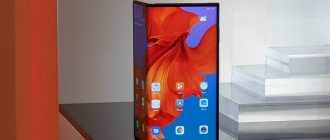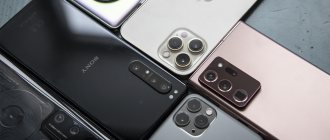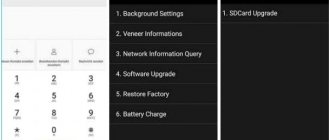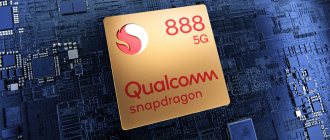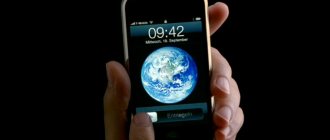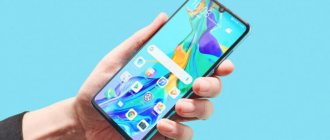I managed to get acquainted with Huawei Mate 9 even before its official announcement - and the device, which has changed little in appearance, managed to impress even after an hour of talking with it. The time has come to understand it in more detail.
This is a smartphone of a classic format for the Huawei Mate family, which can safely be called the ugly word “phablet”. Although there are no specific criteria for classifying mobile devices by screen size, and I personally adhere to the rule of “less than 6 inches is a smartphone,” the Mate 9 with a 5.9-inch diagonal screen really teases and encourages use of this term.
Even though the screen has become 0.1 inches smaller than that of its predecessor, Mate 8, this, of course, does not change the perception of the gadget. Before us is a large, fully equipped and expensive smartphone, designed primarily for the business public who need a multifunctional harvester. And which, of course, does not really need to reinforce its status with a corresponding gadget - in the image field, the latest iPhone (especially in the Plus version) is still unrivaled.
Nevertheless, Huawei is continuously growing in the smartphone market - and a significant share of sales is made up of expensive gadgets with serious characteristics. No one will shyly hide the name of their Chinese smartphone anymore. Huawei has made a name for itself and is even trying to make it work for itself.
Specifications
- Screen: 5.9”, IPS LCD, 1920x1080 pixels, Gorilla Glass 3, 2.5D, oleophobic coating.
- Operating system: Android 7.0 Nougat, EMUI 5.0 shell
- Processor: Huawei HiSilicon Kirin 960, 64 bits, 4 Cortex-A53 cores (1.4 GHz) + 4 Cortex-A73 cores (2.4 GHz).
- GPU: Mali-G71 MP8, 8 cores, 900 MHz.
- RAM: 4 GB.
- Built-in memory: 64 GB + MicroSD up to 256 GB.
- Cameras: dual module 20 + 12 MP (aperture f/2.2, OIS, Leica optics, phase and laser autofocus, dual LED flash, HDR), 8 MP (aperture f/1.9, Full HD).
- Battery: 4,000 mAh, lithium polymer, non-removable.
- Dimensions: 156.9x78.9x7.9 mm.
- Weight: 190 gr.
- SIM slots: 1 NanoSIM + MicroSD or 2 NanoSIM.
- Communications: 3G, 4G LTE 1 (2100), 3 (1800), 7 (2600), 38 (2600), 39 (1900), 40 (2300), 41 (2500), Wi-Fi 802.11 a/b/g /n/ac, DLNA, Wi-Fi Direct, Bluetooth 4.2 LE, GPS, A-GPS, GLONASS, GALILEO, NFC, IrDA.
- Sensors: fingerprint scanner, accelerometer, gyroscope, barometer, compass, light sensor, proximity sensor.
- Available colors: space grey, lunar silver, champagne gold, mocha brown, white ceramic and black.
Fingerprint's scanner
The fingerprint scanner is located on the back panel under the main camera module. The fingerprint sensor works quickly and with high accuracy; it recognizes fingerprints even in sleep mode - just put your finger on it, and the smartphone will immediately unlock.
The scanner has additional functions, for example, it can be used to take photos and shoot videos, answer calls, turn off the alarm, open the notification panel and even scroll through photos in the gallery.
Equipment
Huawei Mate 9 was delivered in a regular envelope package, so I was not able to evaluate all the advantages or disadvantages of a full-fledged smartphone. However, he did not arrive naked, but in a clear plastic case. It's always nice when manufacturers supplement the standard kit with such things.
Ultimately, immediately after purchasing a smartphone, you can choose how you will carry it with you: with or without a case. But note that it increases the size of the already not particularly light and thin Mate 9.
Huawei Mate 9 review: Lord of the Phablets
The Mate line from Huawei is always cutting-edge smartphones with a large form factor.
But if previously these were devices in the high price range, then with the release of Huawei Mate 9 and Mate 9 Pro, the line acquired flagship status. Hence the interest. In the review of Huawei Mate 9, first of all, I want to dwell on the emotions and feelings that arose while using the Huawei flagship. So to speak, “like/dislike” and express your subjective opinion about the phone.
For an initial acquaintance with Huawei Mate 9, it is better to use this post:
Huawei Mate 9: unboxing and first look
The characteristics , description of appearance, delivery package and other similar information are detailed there Many beautiful photos are included.
The review is written based on the basic version of Huawei Mate 9 Dual MHA-L29 for Europe (Space Gray color) with 4 GB of RAM and 64 GB of ROM.
Appearance
The design of the Mate line of smartphones has been beautiful since the first generation. With the release of each new model, Huawei brought the appearance to practical perfection, gradually eliminating shortcomings and cutting off unnecessary things. The latest flagship Mate 9 has become a design standard for Huawei - a smooth metal body, a chamfer at the end, a lacquered coating on the rear panel and a 2.5D effect for the front protective glass. Taken together, all these solutions are pleasing not only to the eye, but also to the hands. The smartphone looks refined to the smallest detail, it is comfortable and pleasant to hold. Also, thanks to the lamination on the back, the Mate 9, contrary to expectations, does not slide across the palm like many modern metal counterparts.
But not everything is as simple as it might seem at first glance. Of course, the Mate 9 is a beautiful phablet, but as we know, beauty requires sacrifice. In this case, it became larger. The smartphone is definitely compact at almost 6 inches and can be used with one hand without any problems. However, 200 grams of live weight and an 8mm metal case make themselves felt when you take the Mate 9 in your hands. It’s not that such a sacrifice was significant - it’s just that shovels are not suitable for everyone, and they’re also heavy.
In general, the design of the Mate 9 looks very successful, despite its devotion to the classics. The protective glass of the screen smoothly transitions into a streamlined metal body. The laminated surface of the back panel allows the smartphone to play with reflections in the light. And the plastic inserts for antennas at the top and bottom are not at all conspicuous, complementing the overall design.
On the front, the Mate 9 has the standard elements: a 5.9-inch screen, the Huawei logo at the bottom and top - a front-facing camera, an earpiece, and standard sensors, including an LED indicator for incoming notifications. There are no physical or touch control keys on the bottom edge, as they are displayed on the screen. The settings have a convenient function for changing buttons - everyone can choose their location for themselves.
The back of the phablet has a familiar appearance: a main dual camera with a slightly protruding module framed by a metal oval, a fingerprint scanner in a round recess with a chamfer, again the Huawei logo and information about the place of production and certification.
Huawei has used every edge of the Mate 9 to accommodate all the main connectors and keys. So, on the left side there is a universal tray for two Nano-format SIM cards or a duo of NanoSIM and MicroSD, while on the right there is a power key and an inseparable volume rocker. At the top, on both edges, there is a 3.5 mm headphone port and a rarity in modern flagships - an infrared port (IrDA). The bottom end is completely devoted to the USB Type-C connector and the surrounding perforation for the main speaker and microphone.
To give an idea of the size of the Mate 9, here's a comparison with other smartphones: Xiaomi Mi Note 2 (5.7 inches) and ZTE Blade V8 (5.2 inches).
⇡#Appearance, ergonomics and software
Smartphones today are most often almost indistinguishable from one another - making unusual gadgets is dangerous for business, and the classic Chinese “copy an iPhone” scenario only adds more fuel to this standardization stove. Moreover, Apple, starting with the iPhone 6, has lost its special identity, having itself fit into the trend of “thinner, wider, more rounded.” Huawei is no exception here, although the company sometimes produces very interesting and even original smartphones in terms of design - remember Honor 8, for example. But in the Mate series, the Chinese do not accept experiments, continuing to follow the line begun a couple of years ago. One could say that the smartphones in this series have their own face - and this would be the absolute truth - if this face were not so similar to hundreds of almost exactly the same ones.
| Huawei Mate 9, silver version | ||
Distinctive features of the Mate 9, in addition to the dual camera, the lenses of which are located vertically (as on the Xiaomi Mi5s Plus, by the way): a smooth and glossy back panel, as opposed to the now more common “rough” polished surfaces; the inscription “Huawei” under the display, engraved on a panel with an unusual texture; slightly arched back. The material, however, is ordinary - metal with plastic inserts on top and bottom, necessary for normal signal reception.
Huawei Mate 9, front panel: above the display – earpiece, light sensor and front camera
The colors are strict and familiar: gold (champagne gold, as in our case), gray (space gray), brown (mocha brown), silver (moonlight silver) and white (ceramic white). Moreover, both the color of the rear panel and the front panel are different - in principle, there is room to turn around.
Huawei Mate 9, rear panel: dual camera, dual LED flash, autofocus laser and fingerprint scanner
In terms of dimensions and the feel of use, Huawei Mate 9 is very similar to its predecessor - it is only 5 grams heavier and a fraction of a millimeter narrower and lower. Despite the perfectly polished back panel, it does not slip out of your hand like the glass Honor 8. The thickness, for my taste, is optimal relative to other sizes, and it is comfortable to hold the device. Veteran users of large smartphones told me that they are able to operate it with one hand; those less accustomed to this can, like many other giant devices, activate the operating mode in a window that reduces the size of the actual desktop.
Huawei Mate 9, left side: slot for SIM cards and microSD memory cards
Huawei Mate 9, right side: power and volume keys/camera release keys
The functional elements are located in places standard for most Android smartphones; there are no additional keys or a mini-jack moved somewhere in the wrong place (for example, into eternity). But there is USB Type-C - the Mate 8, let me remind you, had microUSB, which at that time seemed like an advantage, but now it’s an anachronism. Unfortunately, the navigation keys here are virtual and displayed on the display, thereby slightly hiding the treasured tenths of an inch.
Huawei Mate 9, top edge: 3.5 mm mini-jack and IR sensor
Huawei Mate 9, bottom edge: USB Type-C port and speaker hidden under the grille to the right of the connector
The camera block protrudes slightly above the body, but I never considered and do not consider this a disadvantage. For example, because in this case it is easy to notice if you touch it and wipe it off in time. The fingerprint scanner is again round, located under the camera and slightly recessed into the body - it is also quite successfully recognized by touch.
The scanner itself is quite ordinary, capacitive, with all its advantages (speed) and disadvantages (the slightest damage to the finger leads to recognition failures). I didn’t notice any peculiarities in his work, everything was at the usual high level today. But, which is also typical for Huawei, it can be used not only to unlock the device or confirm payments, but also to control the camera, answer calls and turn off the alarm. By the way, it reacts not only to a simple touch, but also when you slide your finger over it - with this movement you can open and close the notification panel.
Huawei Mate 9 became one of the first officially sold smartphones with Android 7.0 Nougat. However, this is for history - since the beginning of this year, updates from the new OS have been pouring in on long-released gadgets. I wrote about Nougat in my Google Pixel review, and I refer you to it for details. But besides this, Mate 9 is equipped with a completely new proprietary shell, EMUI 5.0. Let's look at it in a little more detail.
Although there is not much to say here - external changes can be called exclusively cosmetic. The shell has moved a little closer to regular Android, slowly getting rid of unnecessary details that previously might have seemed overly “Chinese”. This is extremely logical, since the fifth version of EMUI was the first to be developed not only in China, but also by groups of designers and architects scattered around the world (there is also a Moscow team, for example). However, EMUI 4 also looked very neat and did not confuse us with any strange functions or unusual behavior - EMUI 5 simply continued the trend. One of the interesting new little things is flexibility in organizing the workspace.
As for functionality, it turned out that Android 7.0 “caught up” with EMUI in some areas - for example, dual-screen functionality appeared, which was available in EMUi before - but in this case it can be activated by knocking the knuckle in the right order. Yes, the “Knock Knock” function is also in place. Other important Nougat features, such as quick settings and displaying messages directly in the notification feed, have also been transferred to EMUI.
In technical terms, EMUI 5.0 also has the latest: native Vulkan support, flexible management of computing resources, which allows you to save energy without a noticeable drop in performance (this, however, is what everyone strives for today), its own file system (F2FS) instead of the standard one for Android – promise a significant reduction in the number of false memory accesses. Personal experiences confirm this: in terms of speed, Huawei Mate 9 is confidently on the same level as Moto Z and Google Pixel. It seems that this year many will set performance records - Nougat in general turned out to be very successful in this regard.
Display and sound
Huawei Mate 9 has a 5.9-inch LCD display with a resolution of 1920 × 1080 pixels. There are no bells and whistles - Huawei saved all of them for the Pro version, which is surprisingly reminiscent in appearance of the Samsung Galaxy S6/S7 edge. There is AMOLED, 2K resolution (read: WQHD, or 2560 × 1440), and fashionable curvature. The “regular” Mate 9 has a display with standard Huawei characteristics – the company has long been famous for its calm attitude towards ultra-high resolution. The pixel density ends up being a not-so-impressive 373 ppi, but it’s enough to make the picture on the screen look smooth—you can’t fault the fonts. For those who like to watch movies in 4K resolution from their phone, this may be a disappointment, but for everyone else it’s rather good - with normal image quality, less computing resources and battery are wasted.
The use of LCD technology rather than OLED is also common. It uses an IPS matrix, and it is of quite high quality - there are no questions about the viewing angles. Oleophobic coating is very effective. The touch panel (supports ten touches, works with gestures) can respond to the touch of a gloved hand when a special setting is activated.
I wanted, as usual, to complain about liquid crystals being a thing of the past instead of organic LEDs - and indeed, in terms of the level of contrast of displays, technologies simply cannot be put on the same level. For example, Mate 9 produces a static contrast ratio of 1461:1 (minimum black luminance of 0.4 cd/m2), which outperforms all direct LCD competitors. But with OLED it is conditionally infinite and there can be no talk of any highlights or dark gray instead of black in high-contrast scenes.
But the brightness level – 662 cd/m2 – makes things quiet a little. This is a phenomenal indicator - I recommend that you immediately set the auto-adjustment, otherwise in the dark the screen will seriously hurt your eyes. But with automatic adjustment, reading information from it is as comfortable as possible in any situation. In fact, a lower level would be enough, but it’s still impressive - this is a value not yet available for OLED.
Huawei Mate 9, color temperature. Blue line – Mate 9 indicators, dotted line – reference temperature
In addition to this, the display is also well configured. The color temperature, of course, still noticeably exceeds the standard, but against the background of the 9-10 thousand Kelvin that is already familiar today, the level of 7500-8000 Kelvin, at which it stays with standard settings, seems almost normal. In fact, this, of course, is still not normal - a deviation in the blue-green spectrum is visible on the graph with the naked eye. And when using a smartphone, the picture seems a little cold - probably true, because I’m writing this review behind a calibrated display. However, manufacturers believe that users love cool tones.
Huawei Mate 9, gamma. Yellow line – Mate 9 indicators, dotted line – reference range
Huawei Mate 9, color gamut. Gray triangle - sRGB coverage, white triangle - Mate 9 coverage
The average gamma is 2.21, the average deviation DeltaE for the extended Color Checker palette (shades of gray + a wide range of color shades) is 5.21. The result is average, but rather good for a smartphone.
| Huawei Mate 9, display settings | ||
But advanced image settings can come to the rescue - for example, with one touch you can make the picture on the screen warm and close to sRGB standards. There is also a “vision protection mode” that is common today, with a super-warm picture - it is recommended to switch to it before bed, your eyes get less tired.
When it comes to sound, the Mate 9 doesn’t offer any new horizons either. Huawei does not boast of an audiophile DAC or a special amplifier, but at the same time listening to music on headphones from this device is very pleasant - the power is not prohibitive (in the subway you need to turn the volume up to maximum), but the detail and depth of sound across the entire spectrum is very decent. For a smartphone this is a very good level.
The speaker is monophonic, loud, located behind the right grille from the USB Type-C port - and, unfortunately, is easily blocked by your finger if you watch something on a smartphone or play on it in landscape orientation. It is also worth noting that there are as many as four microphones located in different parts of the smartphone, which allows you to confidently filter out external noise during a conversation.
Display
Huawei Mate 9 is a true flagship phablet, so you expect the best features in such a device. However, the latest generation of the Mate line did not receive Quad HD screen resolution, which was expected for a new product. Huawei has installed an excellent, bright and contrasting 5.9-inch IPS display with Full HD resolution (1920x1080 pixels) in the Mate 9. However, this decision of the Chinese company also has a significant advantage - higher performance, as well as autonomy, of course.
The resulting pixel density per inch is 373 ppi, which is higher than Retina. Accordingly, the human eye will not see obvious pixelation on the Mate 9 screen - even Full HD, with proper implementation, will not allow this.
The brightness is adjusted either manually using the slider in the notification shade, or by installing an automatic setting based on light sensor data. AnTuTu testing revealed support for 10 simultaneous touches. Among the nice touches associated with the screen, the Mate 9 provides the ability to work with gloves, as well as a function for manually adjusting the color temperature (cold or warm) and an eye protection mode. The latter reduces ultraviolet radiation and colors fade into a yellow tint - this is normal and prevents eye fatigue.
The Huawei Mate 9's picture is oversaturated. The color balance is different from other similar smartphones. The brightness is uniform, as is the color tone. White color is displayed well and without defects, black is average. When viewing the screen from different angles, some distortions appear: the contrast of the picture decreases, and the black color becomes very light and turns into a red tint. The viewing angles in the phablet are maximum. Even with large deviations, no significant changes are observed.
The anti-glare properties of the display allow you to comfortably use the Mate 9 outdoors during the day. An excellent level of maximum brightness also contributes to this. At night, the phablet screen does not hit your eyes with bright light - the minimum brightness level is conveniently adjusted for use in complete darkness. By activating the UV-reducing vision protection mode, the situation becomes even more comfortable. Of the obvious disadvantages, I can only note the unstable black color and not entirely natural shades.
Communication, sound and competitors
The quality of Network reception on the Huawei Mate 9 is at a decent level, despite the all-metal body. The audibility and quality of speech transmission during calls does not raise any questions, which is not surprising for Huawei flagships in recent years.
The stereo speakers of the Huawei Mate 9 deserve special mention. It's unusual to hear such cool sound in a phone that isn't promoted as a musically outstanding device. The sound quality from the speakers is truly top-notch. This is achieved due to an interesting layout of the speakers - on the front side at the top there is a tweeter, and at the bottom end there is a loud CB speaker with a hint of low frequencies.
I heard such a sound only on HTC flagships, and even then not all of them.
Competitors
As such, there are simply no equivalent analogs to the Huawei Mate 9 at the moment (early 2022). In the class of smartphones with large screens (5.7 inches and larger), it is difficult to find an adequate replacement for the Mate 9. Here are a few more or less sane options:
- Xiaomi Mi Mix . The average price is 49,990 rubles. Apart from its curious appearance, Mi Mix has nothing interesting to offer.
- MEIZU Pro 6 Plus . The average price is 33,500 rubles. A completely balanced option, but with more modest autonomy, an outdated processor and an even more controversial shell.
- LG V20 . The average price is 34,000 rubles. A strange but interesting device, you can consider it if you are not afraid of LG and the lack of normal update support.
- HTC U Ultra . The average price is 45,500 rubles. Strictly for fans of the Taiwanese company.
At the same time, the average price in Yandex.Market for Huawei Mate 9 is 36,990 rubles.
It's sad that Huawei still hasn't decided to start official deliveries of this smartphone in Russia. This is strange, because the Mate 9 is successfully sold in many European countries. Let's hope that with the appearance of Huawei P10, Mate 9 will also break into the Russian market.
Camera
Huawei Mate 9 was not only the first smartphone to receive one of the most powerful Kirin 960 processors and the Android Nougat software platform. The phablet also has another interesting feature that is unique to it and, probably, the company’s next flagship, the P10. As you already understand, I mean the second generation Leica dual camera, the only (in the company’s smartphone family) happy owner of which is currently the Mate 9. The term “second generation” implies the use of not only algorithms, but also the proprietary Leica optical system .
We are talking about two modules with different numbers of megapixels. One sensor is responsible for a color image (RGB) with a resolution of 12 megapixels, and the second is responsible for a monochrome image with a resolution of 20 megapixels. As before, they both work together and combine their best properties - color rendition and detail - into one photo. The main dual camera of the Mate 9 also comes with a lot of other technologies, not only from the popular German brand: optical image stabilization (OIS), 2x hybrid zoom and hybrid autofocus with phase, contrast and laser focusing capabilities.
The aperture value is f/2.2. At the same time, there is an aperture simulation mode (wide aperture mode), thanks to which you can set, for example, f/1.4, which is inaccessible for smartphones. Of course, there is support for shooting 4K video. The focal length is 27 mm (35 mm equivalent). The Leica lens for the Mate 9 still uses aspherical lenses, which are rarely seen in smartphones due to their high cost - this is already the level of real “DSLRs”. The flash is also double, that is, it consists of two LEDs of different colors. The phablet software automatically determines which LEDs to use in a certain situation.
Not surprisingly, the standard camera app for Huawei Mate 9 supports a ton of all kinds of settings. It’s a pleasure for a real photographer – there’s no other way to say it.
With its two aspherical lenses from Leica and a new, more powerful ISP (Image Signal Processor) installed in the SoC, the main camera of the Mate 9 can easily compete with amateur or even semi-pro equipment. And, nevertheless, the amateur will not get confused here either.
- Camera interface and top menu functions:
- Settings, modes and filters:
- Video shooting, gestures and screen recording function:
- Professional settings:
- Help for beginners:
To test the photographic capabilities of the phablet, I handed it over to our photographer, Nastya (V_ana). She revealed the full potential of the Leica dual camera and explained in detail how the new module copes with tasks in various shooting conditions.
- Main camera
Our test subject's camera works perfectly in automatic mode, taking clear and bright images in any lighting, and, most importantly, it correctly selects the white balance: even the HDR mode does not make a visually noticeable difference. The histogram that your smartphone shows when you click on the “i” icon in the upper right corner of the image helps you monitor the quality of your images.
For shooting in low-light conditions, the Mate 9 camera has many options for getting out of the situation: firstly, simply do not interfere with the automatic exposure, and secondly, you can use the powerful built-in flash.
Softer methods are the use of HDR technology or wide aperture. Here you need to look at the situation. We have compiled a comparison example especially for you.
The main pride of the new camera is its gorgeous bokeh, which was previously only possible with SLR cameras. The wide aperture mode is a magical thing that is sure to become a favorite tool for the mobile photographer. You can independently adjust the f value: when you activate the mode, an aperture widget appears in the lower right corner of the frame with a scale from 0.95 to 16.
The zoom, which only works in certain conditions, was pleasantly surprised by the image quality in daylight. Here we looked at the puddle from the window. And quite successfully!
Users who don’t want to bother with professional settings will find a menu with modes useful, which contains almost all the necessary settings. By swiping left (functional for photos and videos), you can use monochrome, portrait enhancement, HDR mode (suitable for shots with sudden changes in lighting), panorama, slow-motion (Slow-Mo), document scanner, audio notes and even exotic "Delicious food" mode. The “Night Shot” and “Light” modes cannot be used without a tripod - they work at long shutter speeds.
If you are a professional photographer and are not used to silently accepting technical directives, but want to dictate your own terms, then go to PRO mode: pull up the small “bar” above the improvised shutter button - and a menu worthy of a professional DSLR opens. Here you can select the type and method of focusing (by points or weighted, automatic or manual), ISO, shutter speed, exposure, and also select the white balance (in Kelvin or in accordance with external conditions).
Video recording (available in Full HD or HD resolution - your choice) can also be done in more or less manual mode: almost all photo settings are applicable here. For complete happiness, there is a convenient “Autofocus in motion” function and stabilization. You can take photos directly while shooting video, which greatly simplifies working with the camera.
Scrolling to the right takes you to the settings menu. Here you can “tailor” the controls to suit you, add comfort using a grid or level, and even pre-adjust the image in terms of brightness, saturation and color rendition. The most curious thing is that Huawei Mate 9 saves files in professional RAW format. Subsequently, when processing photographs, it allows you to obtain more data, since RAW images store all the original information.
To fully demonstrate the real capabilities of the Huawei Mate 9 camera, we took several shots on a phablet and a semi-professional Canon EOS 60 D SLR camera. We decided to do this at a recent press conference on the latest chapter of “Resident Evil” with Milla Jovovich and Paul Andersen. Judging by the quality of the images, the smartphone may well compete with a big “fool” with a long lens.
Example of video shooting indoors with low lighting:
- Front-camera
The front camera has a sensor with a resolution of 8 megapixels. There are no longer extensive options for manual adjustments, as well as the “Wide Aperture” function. The only choice is one of a dozen filters and a flash mode by illuminating the object with the maximum brightness of the screen. The front camera takes pictures best in natural daylight: in electric light it turns yellow, and in twilight it begins to make noticeable noise.
In this case, the “Decoration” mode rules the show, which automatically evens out skin tone, makes the frame lighter, and also gives sharpness to the eyes. In the same mode you can shoot video (HD).
The front camera does not take a photo instantly. When taking a photo, it has a three-second delay and displays an enlarged portion of the image in the upper right corner so you can make sure the autofocus is working. And the most interesting thing: 8 front megapixels are capable of taking full panoramas, that is, selfies with a wide viewing angle. For example, this will allow you to capture yourself against the backdrop of some landmark.
⇡#Camera
Huawei Mate 9 is the second smartphone after the P9 to have “Leica” written on it. Moreover, here we have already established the second fruit of the joint creativity of the German and Chinese companies - whatever this co-creation may be (there is a suspicion that this is a purely image move). Unlike the module used in the P9, here, paired with a 12-megapixel RGB sensor, a monochrome sensor is not of the same resolution, but 20 megapixels. The optics have not changed - “SUMMARIT-H” is written on lenses with an equivalent focal length of 27 mm and an aperture of ƒ/2.2. At a minimum, Leica issued its license to these lenses.
However, you can argue as much as you like and demonstrate your skepticism about the participation or non-participation of photography gurus in the development of mobile cameras for Huawei, but the first pancake came out at least not lumpy - the P9 camera confidently entered the pantheon of the best of last year, and the same module , used in Xiaomi M5s Plus, performed much worse. It’s all the more interesting to look at the second iteration of the new generation of dual Huawei/Leica cameras.
| Huawei Mate 9, camera app interface | ||
The interface, first shown in P9, has been preserved - the fonts are in place, and calling different menus by swiping sideways on the screen, and special color schemes. Several new shooting modes have been added to this: audio notes for photos, text recognition and watermarks.
The main innovation, in my opinion, was not the 20-megapixel monochrome sensor, but the appearance of an optical stabilizer, due to which, in fact, the module protrudes slightly above the body. This is precisely what Huawei P9 and Honor 8 lacked in order to call their cameras unambiguously the best last year.
| Operation of the “hybrid” zoom in daylight (2x and 3x zoom) | |||
In addition, the manufacturer announced a “hybrid” zoom added to the camera, allowing for up to six times magnification while maintaining resolution. What its hybridity is is not explained, nor is the principle of its operation, but taking into account the use of two lenses of the same focal length, the absence of a built-in optical zoom and the fact that the zoom only works when the 12-megapixel mode is activated, we can assume the following. The camera uses information from a 20-megapixel monochrome sensor to create (or rather “invent” by duplicating pixels) an image of even higher resolution, and then cuts out the required piece from it with a resolution of 3968 × 2976. The technique is called supersampling and allows, under ideal conditions, to create an image that the detailing is really similar to the real thing. With the slightest deterioration in conditions, a drop in detail and loss of color details are noticeable.
| Operation of “hybrid” zoom in artificial light (2x magnification) | ||
In the above example, of course, the first thing that catches your eye is the difference in viewing angle, which is inevitable for shooting from different distances, as was done here, but pay special attention to the changed (not for the better) white balance and the sharply increased level noise This, of course, is not a classic digital zoom due to a rough crop of a fragment, but this technology cannot be called breakthrough either. With higher magnification, the problems are aggravated exponentially - it is better not to use more than twice the magnification.
Autofocus is also hybrid, but without the quotation marks - both phase sensors and contrast sensors with laser clarification of distances are used. It works quite quickly, but, unfortunately, from time to time it makes mistakes in simple situations. There is no critical mass of errors, but I can’t call his work ideal.
In the review of Xiaomi Mi5s Plus, there was already a head-to-head comparison of the dual camera of this device with the camera of Huawei Mate 9 - I propose to compare it with the competing Chinese here too. We are also preparing a more detailed comparison of this camera with the cameras of the LG V20 and Apple iPhone 7 Plus - and will publish it in a separate material.
| On the left is a photo taken on Xiaomi Mi5s Plus, on the right is a photo taken on Huawei Mate 9 | ||
| On the left is a photo taken on Xiaomi Mi5s Plus, on the right is a photo taken on Huawei Mate 9 | ||
| On the left is a photo taken on Xiaomi Mi5s Plus, on the right is a photo taken on Huawei Mate 9 | ||
| On the left is a photo taken on Xiaomi Mi5s Plus, on the right is a photo taken on Huawei Mate 9 | ||
The Mate 9's camera is truly impressive. The advantages of the previous iteration have been preserved: honest, soft colors; very well implemented black and white mode; wider dynamic range compared to all competitors. But now an optical stabilizer has been added to this, allowing you to count on higher quality shooting in low-light conditions. The camera previously made it possible to obtain more details due to the monochrome sensor, but now this is not hampered by blur due to too long shutter speeds, and the detail has increased due to the 20-megapixel resolution. In terms of all its qualities, the Mate 9, in my opinion, is the best mobile camera in the world that currently exists. The signature background blur, by the way, is also in place - but it works, as before, rather clumsily.
Huawei Mate 9-gallery
View all images (24)The smartphone can shoot 4K video - confidently, but without much brilliance.
The front camera is not bad - 8 megapixels, with autofocus. I wouldn't say it takes wide-angle camera shots with a tiny sensor to the next level, but it can add a little precision and sharpness to self-portraits, especially in the case of group selfies. In general, the picture is quite decent; the front camera is usable even in mediocre lighting.
Autonomous operation
Huawei Mate 9 has a 15.2 Wh battery (4000 mAh, 3.8 V) - the same as on the Mate 8. Even with very active use, it is at least difficult to discharge the Mate 9 during a working day. I won’t say it’s impossible, but I couldn’t do it. In quiet mode, the battery lasts for more than a day.
In our traditional test with HD video playback at maximum brightness with Wi-Fi turned on and auto-update, the smartphone lasted almost seven and a half hours, which is an excellent result for a device with a six-inch screen. It may be inferior to the Mate 8, but only slightly.
The Mate 9 is charged using the USB Type-C port and supports Huawei Supercharge technology, which allows you to charge the smartphone by about half in 20 minutes. However, we did not have the opportunity to check the marketing claims - such results can only be achieved with a proprietary charger, and the device arrived to us for testing without a charger. With chargers from other manufacturers (including those delivering the required current of 5 A), the Mate 9 was half charged in about 45-50 minutes. And completely - in about two hours.
System and software
The flagship Huawei Mate 9 entered the market with Google's latest sweet dessert on board - Nougat. The Android 7.0 operating system in its usual form is unrecognizable under the cover of the interface shell from the manufacturer. Here Emotion UI is the latest version 5.0 with an updated design and design of all kinds of menus. Everything has become more minimalist and is now done in light colors with subtle controls.
The main detail of the Huawei proprietary interface – the application menu – has changed structurally. In EMUI 5.0, the user can now choose one of two icon layout options - on the desktop or traditionally for Android in the form of a separate menu with a vertically scrolling list. The Notification Center is no longer divided into two tabs, but rather resembles the standard design from Android 7.0 with a double fold-out layout and full-width notification cards. The blur used in older full screen versions of EMUI is now only applied to inactive areas of the interface. For example, when the curtain is opened, the desktop acquires the effect of diffused light with a slight blur.
The appearance of standard application icons has slightly changed. Compared to EMUI 4.1 on the example of Huawei Nova, which we reviewed, EMUI 5.0 has brighter colors and more attention to various details. If you haven't noticed them, it's worth taking a closer look: the phone now has perforations like old telephone handsets, the email has three-color ribbons on the sides, the settings icon has become completely gray, messages have become blue, and the gallery is no longer blue, having received photo cards in light -gray background. The list is actually long and could be continued for a long time, but not within the scope of the review.
Also, one of the notable innovations is a fresh multitasking screen - EMUI 5.0 has a vertical carousel with application cards, like in the regular version of Android. Application cards can be closed individually one at a time or all at once, and you can also put a lock on them. Similar to MIUI from Xiaomi, the amount of RAM is also indicated on the open applications screen, both available and total.
The trend of minimalism and bright colors has reached Huawei. Overall, I can say that the Emotion UI add-on has turned into a more enjoyable product. Although I'm more of a proponent of stock Android design, that's a completely different story.
Cooperation with Leica. Attempt number 2
As with the Huawei P9, the manufacturer worked on the Mate 9 camera in collaboration with Leica specialists. According to Huawei, the new module is a modified version of the P9 camera. The top lens is responsible for taking black and white photos with a resolution of 20 megapixels, and the bottom lens is capable of perceiving colors and has a resolution of 12 megapixels. The combination of these lenses should provide particularly natural and detailed images that meet Leica standards.
Within the walls of the test laboratory, the dual camera makes an ambivalent impression: although the images in direct comparison with photographs from competitors do look richer and more natural, some pictures lose important details. We see the reason in a rather aggressive blur, which begins to work too early for our taste. Using the test pattern, we determined that the camera resolution does not reach the theoretically possible level.
However, with the Mate 9 you can still get great photos with a variety of shooting methods. You can use a monochrome lens separately, or use the “professional” mode or increase the exposure. There is also a 4K video recording function on board using optical image stabilization. The 8-megapixel front camera slightly exaggerates the effect in the supposedly “perfect selfie” mode.
The Mate 9 comes with a dual camera system co-developed with Leica. The photos look great, but there are still some flaws
Iron
The latest phablet in the Mate line has the highest-end hardware available today. In Mate 9, Huawei used the most powerful Kirin 960 single-chip platform from its own HiSilicon series with eight processor cores, a new UFS 2.1 memory standard, and an improved Mali-G71 MP8 video accelerator. The company's chipset is manufactured using a modern 16-nanometer technological process, and the Kirin 960 is twice as powerful as the previous Kirin 950.
The Kirin 960 is a flagship processor with two clusters, each of which is based on four cores: Cortex-A73 with a maximum clock speed of 2.4 GHz and Cortex-A53 for undemanding tasks with an operating frequency of 1.8 GHz. The latest generation video accelerator, the Mali-G71 with Bifrost architecture and eight cores at 900 MHz, is responsible for the graphics in the phablet. The amount of RAM is 4 GB (about 2.5 GB free, which is enough for stable operation). Just over 49 GB of the total 64 are available for user files.
Taken together, all the technologies used put Huawei Mate 9 in a leading position in popular benchmarks and allow it to work flawlessly with any tasks, not to mention standard functionality. Likewise with heavy 3D games and high-quality video playback - there is not the slightest hint of lag in terms of FPS, lack of detail in graphics or any stuttering. In addition, in landscape orientation, Mate 9 automatically turns on stereo sound using the main and earpiece speakers. Therefore, playing it is not just pleasant, but a pleasure. Especially if you like noisy shooting games or the loud roar of racing car engines.
Benchmark results:
- AnTuTu: 122,282 points.
- AnTuTu 3D: 17.34 FPS in Marooned and 27.11 FPS in Garden.
- Geekbench 4: 1,915 points in single-core and 5,459 in multi-core tests, 3,259 points in rendering test.
- 3DMark: 2027 points in Sling Shot Extreme.
- PCMark: 6,520 points in Work 2.0.
- Epic Citadel: 60.7 FPS in Ultra High Quality mode.
All the games we tested with maximum graphics settings - traditionally Asphalt 8, Dead Trigger 2, Modern Combat 5, Real Racing 3, Mortal Kombat X and World of Tanks - passed the tests successfully. The result: stable 55-60 FPS, high level of picture detail and no lags or crashes. Obviously, Huawei is doing a good job optimizing its proprietary processors, which is good news.
Autonomy and charging
During operation without charging, the Huawei Mate 9 is powered by a non-removable battery with a capacity of 4000 mAh - an impressive volume, but you should understand that it will be consumed by a large screen and powerful hardware. Despite this, the autonomy of the phablet can be described as decent. Of course, such a “colossus” will not be enough for two days of active use, but by the evening the smartpad is unlikely to run out of charge.
If you believe numerous studies by our foreign colleagues, in terms of autonomy, Mate 9 is inferior to Samsung Galaxy S7 Edge, HTC 10 and Xiaomi Mi5S.
Here are some examples of battery consumption:
- 20 minutes of watching Full HD video (YouTube, Wi-Fi, medium brightness) - 4% charge.
- Night in standby mode (Wi-Fi, mobile Internet, geo turned off) - 3%.
- An hour of playing Worl of Tanks: Blitz at medium brightness over Wi-Fi - about 25%.
- 20 minutes in navigator mode (Yandex.Navigator, 4G, location data, average brightness) - 5 percent charge.
We weren’t able to test fast charging because the smartphone arrived for review without a power adapter. However, charging is fast from a regular 2A unit.
Bottom line
Huawei continues to successfully develop the niche of smartphones with large screens and functional features. The latest flagship Mate 9 is a worthy successor to the series and is able to fairly compete in its segment - with truly powerful hardware, an incomparable Leica dual camera and, of course, an attractive design.
Pros:
- Quite compact body
- High quality screen
- Powerful iron
- Functional camera
- Good sound and stereo support
- Fast fingerprint scanner
- Android 7.0 Nougat
Minuses:
- Stainless back panel
- Not the best oleophobic coating
May not like:
- Rear scanner (hello, Mate 9 Pro)
- Black edging around the screen
- EMUI interface
- Laminated back panel
Alternative options
Huawei Mate 8
Of course, the most similar to the Mate 9 is its predecessor, the Mate 8. In fact, the battery of this model was able to last a little longer during testing. This smartphone can also work with either dual SIM cards or a combination of SIM card and memory expansion card. There is also a fingerprint scanner on the back side.
However, if you choose this alternative, you will have to give up the dual Leica camera and the new processor. However, the predecessor’s CPU still makes a good impression by today’s standards. We like the metal back cover of the Mate 8 a little more than the painted body of the tested gold Mate 9. The cost of the Mate 8 currently starts at 25,000 rubles.
Apple iPhone 7 Plus 128 GB
Anyone looking for a device with similar performance will find it in the iPhone 7 Plus. We find that iOS 10, combined with Apple's new processor, responds to user input even a little faster. The iPhone 7 Plus also has a dual camera, but here the manufacturer uses a division not based on color sensitivity - one of the lenses is wide-angle, the other allows you to use optical zoom.
The battery performance can't match that of the Mate 9, but 9 hours 34 minutes is still very good. However, we really miss the inclusion of the fast charging feature, as the more than 3 hours it takes for the iPhone to recharge its batteries is a very long time. The cost of the 128 GB version is about 77,000 rubles, the smaller, 32 GB version will cost you 68,000 rubles.
| TEST RESULTS | |
| Productivity and management (35%) 95.1 % | |
| Equipment (25%) 88.9 % | |
| Battery (15%) 88.9 % | |
| Display (15%) 95.5 % | |
| Camera (10%) 78.3 % | |
| CONCLUSION Huawei has managed to write its name in history with its Mate 9. Never before has a smartphone from a Chinese manufacturer topped our respective rankings, but the combination of excellent battery performance, breadth of equipment and strong performance makes the Mate 9 a very compelling choice. Only a small portion of criticism received from us was the camera and the quality of performance. | 91% OVERALL RESULT |
Howey Mate 9
At CES 2016, Huawei Mate 8 was presented as the company's flagship. It really has top-end characteristics, a premium design and will be relevant for another 2-3 years. But time runs at a slightly different pace for flagships - it is much faster. Technologies do not stand still, and neither do competitors - everything is in constant motion. And the Chinese company Huawei cannot lag behind all this cycle. Therefore, the other day they presented the world with a new generation of their flagship - Huawei Mate 9. Contrary to the obvious assumption, this model is not the ninth in the line, but only the fifth, since for some reason the cunning Huawei jumped from Mate 2 directly to Mate 7, leaving many fans of the brand are in dismay. What to expect from the new Mate 9, what are its technical features and when will it go on sale - we'll tell you in this article

